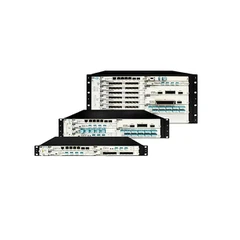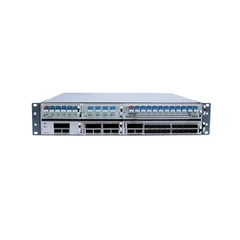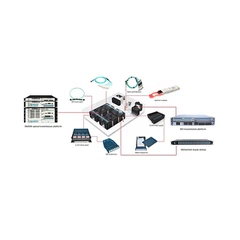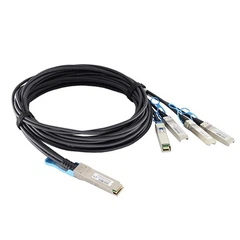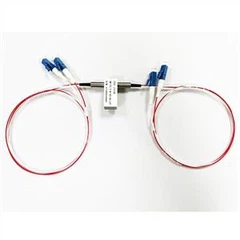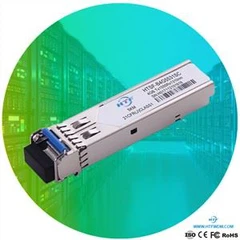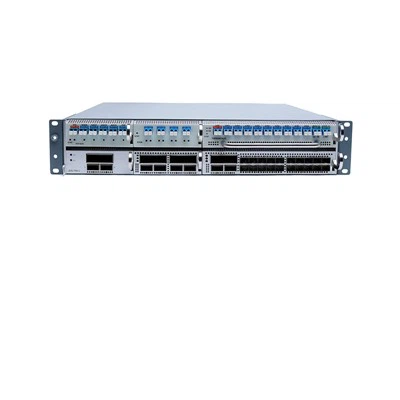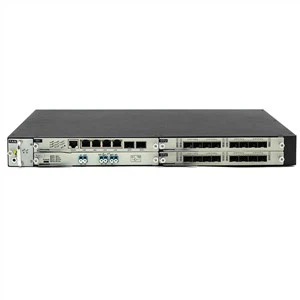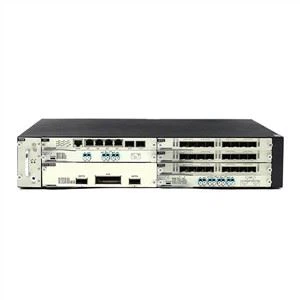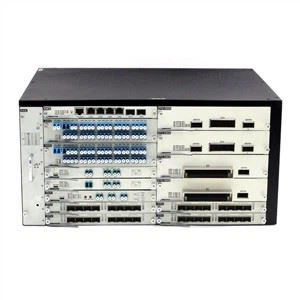What is a fiber optic transceiver?
Optical fiber transceiver is a kind of Ethernet transmission media conversion unit which can exchange short interval twisted pair electrical signal and long interval optical signal. It is also called fiber converter in many centers. The product is generally used in the practical network environment where the Ethernet cable cannot be covered up and the optical fiber must be used to extend the transmission interval. And it is usually located in the access layer of broadband MAN applications; such as: monitoring the high-definition video image transmission of Ping'an project; at the same time, it also plays a great role in helping to connect the last kilometer optical fiber line to the man and the outer network.
Fiber optic transceivers are commonly used in the practical network environment where Ethernet cable cannot be covered up and optical fiber must be used to extend the transmission interval. At the same time, they also play a great role in helping to connect the last kilometer of optical fiber line to the metropolitan area network and the outer network. With optical fiber transceivers, the system is upgraded from copper wire to optical fiber, which provides a low-cost plan for users with short funds, manpower or time. The function of optical fiber transceiver is to convert the electrical signal we want to send into optical signal and send it in. At the same time, it can convert the received optical signal into electrical signal and input it to our receiving end.
Characteristic
Fiber optic transceivers usually have the following basic characteristics:
1. Provide ultra-low delay data transmission.
2. Completely transparent to network protocol.
3. Special ASIC chip is used to realize data line speed forwarding. Programmable ASIC integrates multiple functions into one chip, which has the advantages of simple design, high reliability, low power consumption, etc. it can make the device get higher performance and lower cost.
4. Rack type equipment can provide hot plug function, which is convenient for maintenance and uninterrupted upgrade.
5. Network management equipment can provide network diagnosis, upgrade, status report, abnormal situation report and control functions, and can provide complete operation log and alarm log.
6. The equipment adopts 1 + 1 power supply design, supports ultra wide power supply voltage, and realizes power protection and automatic switching.
7. Support ultra wide working temperature range.
8. Support complete transmission distance (0-120km).
What is a switch?
Switch, which means "switch", is a kind of network equipment used for electrical (optical) signal forwarding. It can provide exclusive electrical signal path for any two network nodes of access switch. The most common switch is the Ethernet switch. Other common ones are telephone voice switch, optical fiber switch, etc.
Network switch is an equipment to expand the network, which can provide more connection ports for the sub network, so as to connect more computers. With the development of communication industry and the promotion of national economy informatization, network switch market is rising steadily. It has the characteristics of high cost performance, high flexibility, relatively simple and easy to implement. Ethernet technology has become the most important LAN networking technology, and network switch has become the most popular switch.
Classification
Broadly speaking, there are two kinds of network switches: Wan switch and LAN switch. Wan switches are mainly used in the field of telecommunications, providing the basic platform for communication. LAN switch is used in LAN to connect terminal equipment, such as PC and network printer. In terms of transmission medium and transmission speed, it can be divided into Ethernet switch, fast Ethernet switch, Gigabit Ethernet switch, FDDI switch, ATM switch and token ring switch. From the scale of application, it can be divided into enterprise level switch, department level switch and working group switch. Generally speaking, enterprise level switches are rack type, department level switches can be rack type (with fewer slots) or fixed configuration type, while team level switches are fixed configuration type (with simpler functions). On the other hand, from the perspective of application scale, as a backbone switch, the switches supporting large enterprises with more than 500 information points are enterprise level switches, the switches supporting medium-sized enterprises with less than 300 information points are department level switches, and the switches supporting less than 100 information points are team level switches.
What is the difference between fiber transceiver and switch?
Optical fiber transceiver is a very cost-effective and flexible equipment. Its common use is to convert the electrical signal in twisted pair into optical signal. It is generally used in the actual network environment where the Ethernet copper cable cannot cover and optical fiber must be used to extend the transmission distance. At the same time, it also plays a huge role in helping to connect the last kilometer of optical fiber line to the metropolitan area network and the outer network effect. Switch is a kind of network equipment used for electrical (optical) signal forwarding, which plays a core role in the mutual communication between wired network equipment (such as computer, printer, computer, etc.), and it is usually connected with router, so that you can access the network through optical cat.
1.Transmission speed
At present, optical fiber transceivers can be divided into 100m optical fiber transceivers, gigabit optical fiber transceivers and 10G Optical Fiber transceivers. Among them, the most common are 100m and gigabit optical fiber transceivers, which are economical and efficient solutions in home and small and medium-sized enterprise networks. There are 1g, 10g, 25g, 100g and 400g network switches. Taking large data center network as an example, 1g / 10g / 25g switch is mainly used for access layer or tor switch, while 40g / 100g / 400g switch is mostly used as core or backbone switch.
2.Installation difficulty
Optical fiber transceiver is a relatively simple network hardware equipment, the interface is less than the switch, so its wiring and connection is relatively simple. They can be used alone or mounted in a rack. As the optical fiber transceiver is a plug and play device, its installation steps are very simple: just insert the corresponding copper cable and optical fiber jumper into the corresponding electrical port and optical port, and then connect the copper cable and optical fiber to both ends of the network equipment. The following video shows you the installation process of fiber optic transceiver.
Network switches can be used alone in a home network or small office, or can be installed in a rack in a large data center network. Generally, the module needs to be inserted into the corresponding port, and then connected with the computer or other network equipment with the corresponding network cable or optical fiber jumper. In high density cabling environment, distribution frame, fiber box and cable management tools need to be used to manage cables and simplify wiring. For the managed network switch, it needs to be equipped with some advanced functions, such as SNMP, VLAN, IGMP and so on.
3.Function configuration
The former can convert electrical signal into optical signal to realize the connection of equipment based on copper cable wiring to extend the transmission distance; the latter can realize the conversion of single mode, single and double fiber, and wavelength conversion (mainly convert the conventional wavelength of 1310nm and 1550nm to WDM wavelength).
Compared with optical fiber transceiver, the function of switch is much more complex, which is determined by its network operating system. According to the network layer, they can be divided into layer 2, layer 3 and layer 4 switches. In general, the layer 2 switch is the basic switch used to transmit data and perform error checking on each frame sent and received. Layer 3 and layer 4 switches have routing function, which can actively send packets to the destination in the best way. In addition, they also have some advanced functions, such as mlag, STP, vxlan, etc.
HTF's products quality is guaranteed, and the accessories are imported.
Contact: support@htfuture.com
Skype :sales5_ 1909,WeChat :16635025029

